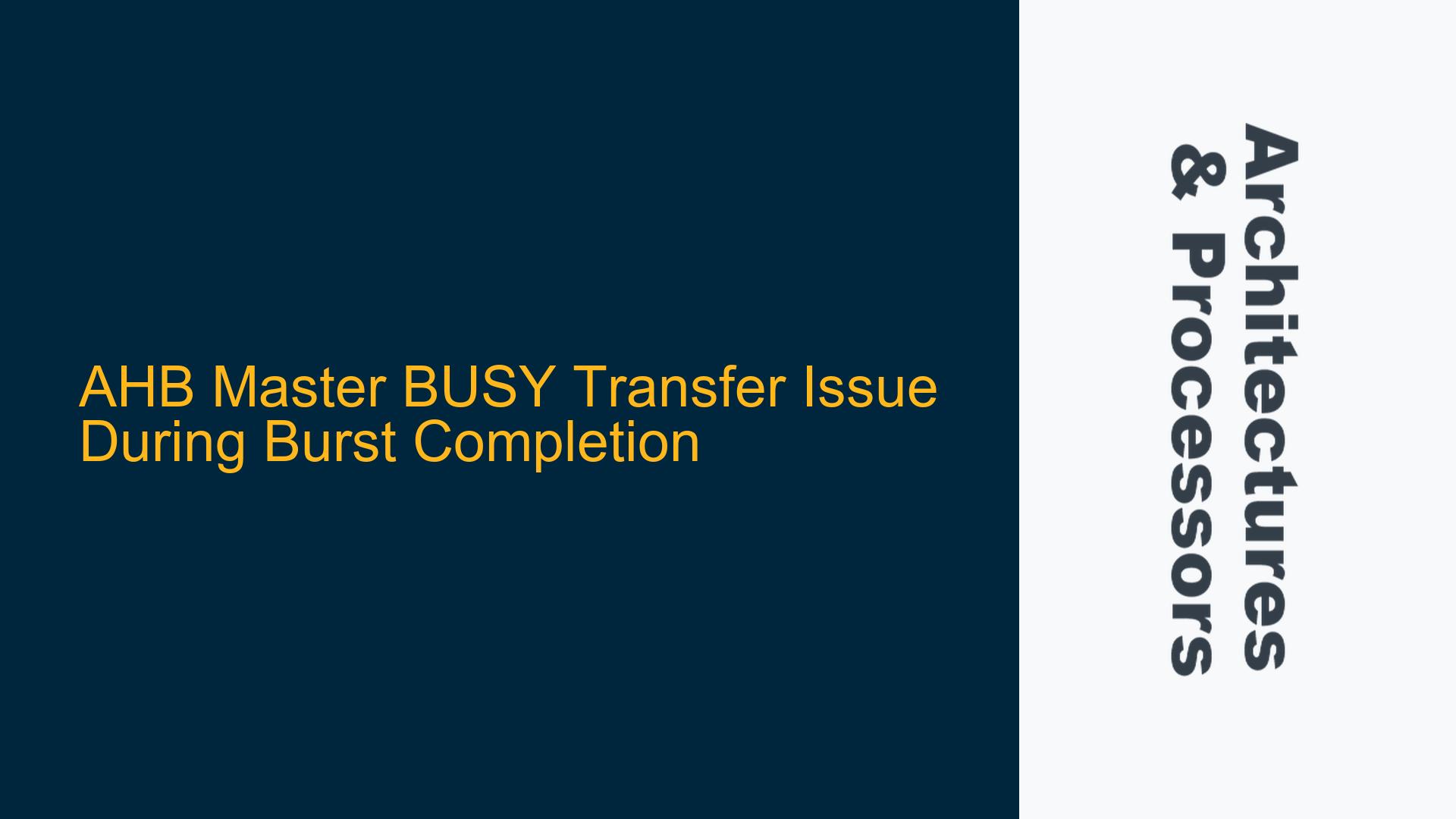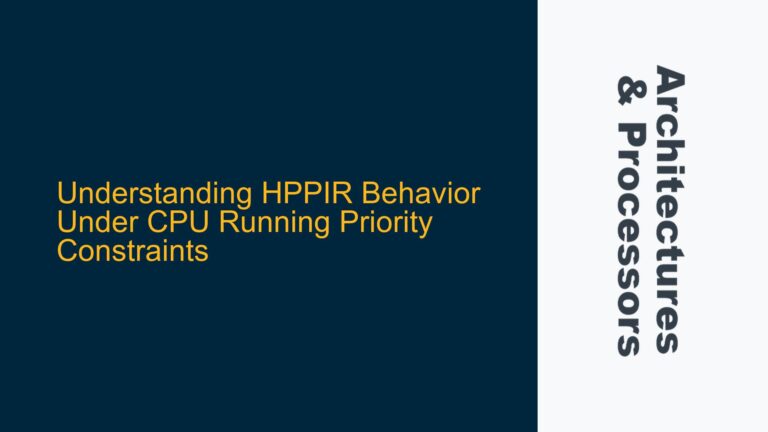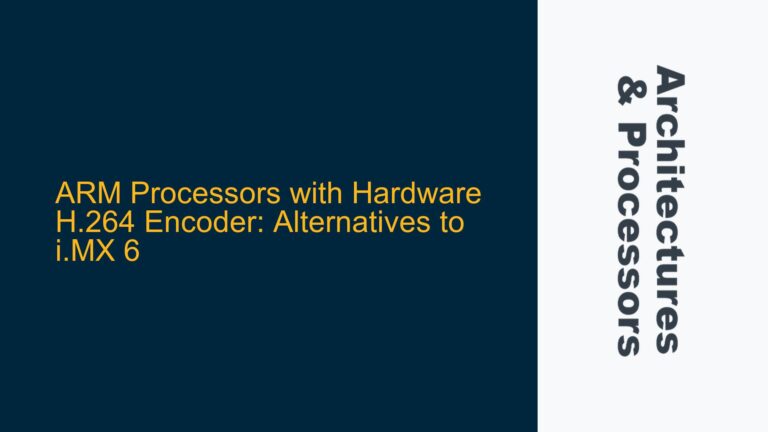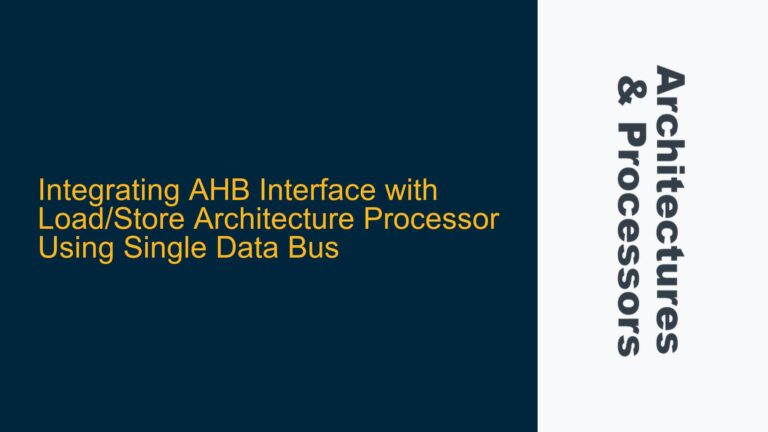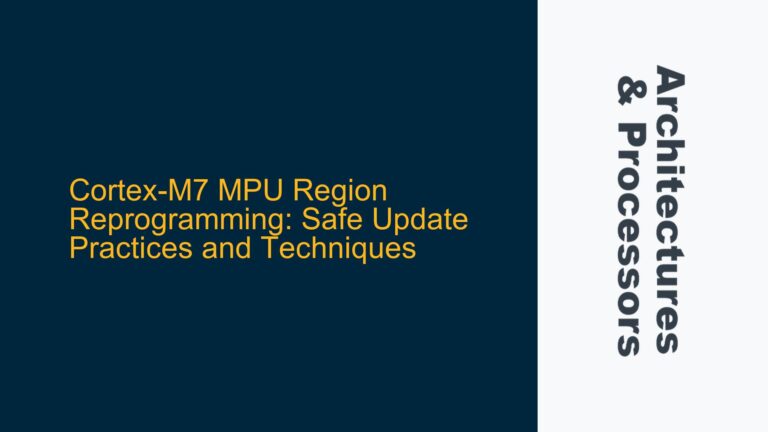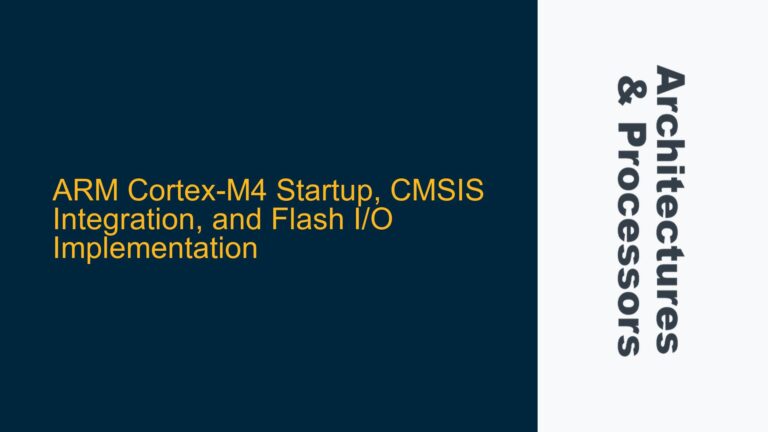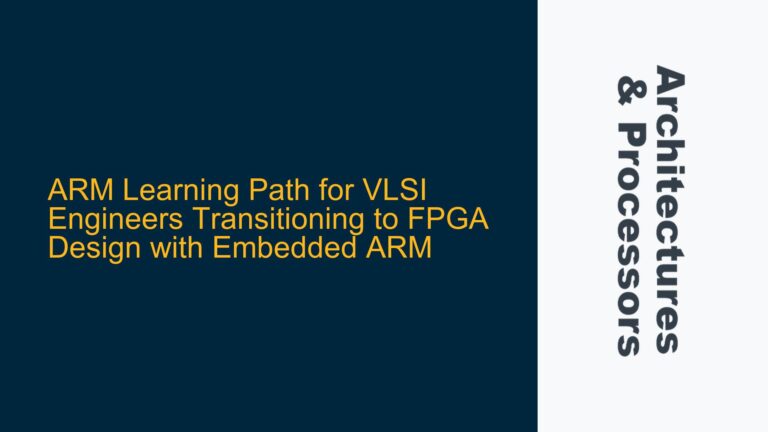AHB Master BUSY Transfer Timing Conflict in INCR4 Burst
In Advanced High-performance Bus (AHB) systems, the timing of BUSY transfers during burst operations can lead to critical arbitration conflicts, particularly when a BUSY transfer is inserted just before the final transfer in a burst sequence. This issue is especially pronounced in INCR4 bursts, where the arbiter’s grant switching logic may prematurely reassign bus ownership, leaving the master unable to complete its final transfer. The problem arises from the interaction between the AHB protocol’s arbitration rules and the timing of BUSY transfers within burst sequences.
The AHB protocol specifies that arbiters should only change bus grants at natural burst boundaries. For an INCR4 burst, this boundary occurs after the fourth transfer. However, when a BUSY transfer is introduced before the final transfer, the arbiter’s sampling mechanism may misinterpret the burst completion point, leading to premature grant switching. This creates a situation where the master loses bus ownership before completing its final data transfer, violating protocol requirements and potentially causing data corruption or system hangs.
The core of the problem lies in the timing relationship between the BUSY transfer insertion and the arbiter’s grant sampling mechanism. When a master inserts a BUSY cycle before the last transfer in an INCR4 burst, the arbiter must maintain the grant until the burst completes, even though the BUSY cycle extends the burst duration. Failure to maintain this grant results in the master being unable to complete its final transfer, as the arbiter may have already granted the bus to another master.
Arbiter Grant Sampling Timing and BUSY Transfer Synchronization
The root cause of this issue stems from the interaction between three key elements in the AHB system: the master’s BUSY transfer insertion logic, the arbiter’s grant sampling mechanism, and the protocol’s burst completion detection rules. The arbiter’s decision to switch grants is based on sampling the address and control signals at specific clock cycles, and this sampling mechanism can become misaligned with the actual burst completion point when BUSY transfers are present.
In a typical INCR4 burst without BUSY transfers, the arbiter samples the third address (A13 in the example) and recognizes that the next transfer will complete the burst. This allows the arbiter to prepare for grant switching at the appropriate boundary. However, when a BUSY transfer is inserted before the final transfer, the burst completion point is effectively delayed by one cycle, but the arbiter’s sampling mechanism may not account for this delay.
The protocol requires that BUSY transfers maintain the same address and control signals as the subsequent transfer, which means the arbiter cannot distinguish between a BUSY cycle and the actual data transfer based solely on these signals. This creates a timing window where the arbiter may misinterpret the BUSY cycle as the final transfer, leading to premature grant switching. The synchronization between the master’s BUSY insertion logic and the arbiter’s grant sampling mechanism must be carefully managed to prevent this misinterpretation.
Another contributing factor is the potential mismatch between the master’s internal state machine and the arbiter’s view of the bus activity. The master may insert BUSY cycles based on its internal timing requirements, but if this timing is not properly communicated to or anticipated by the arbiter, the grant switching logic may operate based on incomplete information. This becomes particularly problematic in systems with multiple masters and complex arbitration schemes, where the arbiter must balance multiple competing requests while maintaining protocol compliance.
Implementing BUSY-Aware Arbitration Logic and Protocol Compliance
To resolve the BUSY transfer timing conflict in AHB systems, several architectural and implementation-level modifications are required. The primary solution involves enhancing the arbiter’s logic to properly handle BUSY transfers within burst sequences, particularly when they occur near burst boundaries. This requires modifications to both the grant switching logic and the burst completion detection mechanism.
The arbiter must be modified to recognize BUSY transfers and adjust its grant switching behavior accordingly. This can be achieved by implementing a BUSY-aware state machine that tracks the actual burst completion point, accounting for any inserted BUSY cycles. The state machine should maintain the current grant until it detects the true end of the burst, regardless of BUSY cycles. This requires additional logic to distinguish between BUSY cycles and actual data transfers, potentially using internal counters or status flags.
A critical enhancement involves modifying the address sampling logic to account for BUSY cycles. Instead of relying solely on the address sequence, the arbiter should incorporate information about BUSY transfers into its decision-making process. This can be achieved by monitoring the HTRANS signals and maintaining an internal count of remaining transfers in the burst. When a BUSY transfer is detected, the arbiter should extend its grant period by one cycle, ensuring the master retains bus ownership through the final transfer.
The implementation should also include proper synchronization between the master’s BUSY insertion logic and the arbiter’s grant management. This can be achieved through additional handshaking signals or status indicators that inform the arbiter about pending BUSY transfers. While this adds some complexity to the interface, it ensures proper coordination between the master and arbiter, preventing premature grant switching.
For protocol compliance, the solution must maintain backward compatibility with existing AHB components while adding the necessary enhancements for BUSY transfer handling. This requires careful design of the state machines and control logic to ensure they operate correctly in all scenarios, including mixed systems with both BUSY-aware and non-BUSY-aware components.
The following table summarizes the key modifications required in the arbiter logic:
| Component | Modification Required | Purpose |
|---|---|---|
| Grant Logic | BUSY-aware state machine | Maintains grant through BUSY cycles |
| Address Sampling | BUSY cycle detection | Distinguishes BUSY from data transfers |
| Burst Completion | Extended transfer counting | Accounts for BUSY cycles in burst length |
| Synchronization | Additional handshaking signals | Coordinates BUSY insertion with grant management |
| Protocol Compliance | Backward compatibility logic | Ensures operation with legacy components |
Implementation of these modifications requires careful verification to ensure proper operation across all corner cases. The verification strategy should include test cases with BUSY transfers at various positions within bursts, particularly near burst boundaries. Special attention should be paid to scenarios where multiple masters are competing for bus access, as this can reveal timing issues in the enhanced arbitration logic.
The solution must also consider power and area implications, as the additional logic for BUSY handling may increase the arbiter’s complexity. Careful optimization of the state machines and control logic can help minimize these impacts while maintaining the required functionality. The enhanced arbiter should be thoroughly verified using both simulation and formal methods to ensure correct operation under all conditions.
In conclusion, resolving the BUSY transfer timing conflict in AHB systems requires a comprehensive approach that addresses both the architectural and implementation aspects of the arbiter design. By implementing BUSY-aware arbitration logic and enhancing the synchronization between masters and arbiters, designers can ensure proper operation while maintaining protocol compliance. The solution must be carefully verified and optimized to meet system requirements while minimizing additional overhead.
